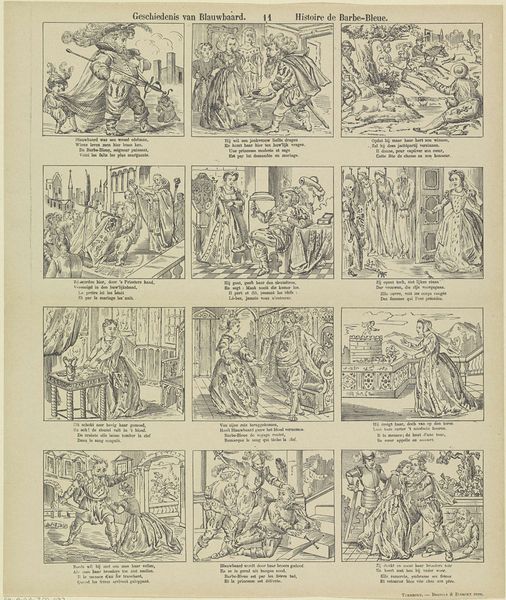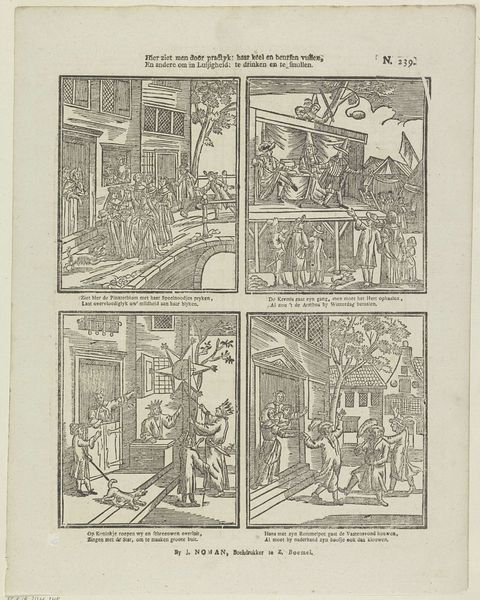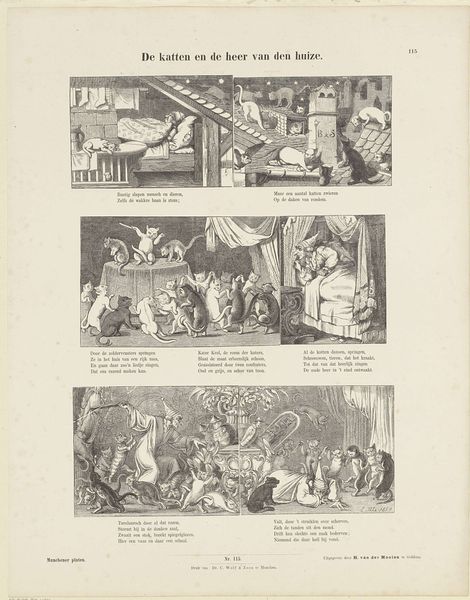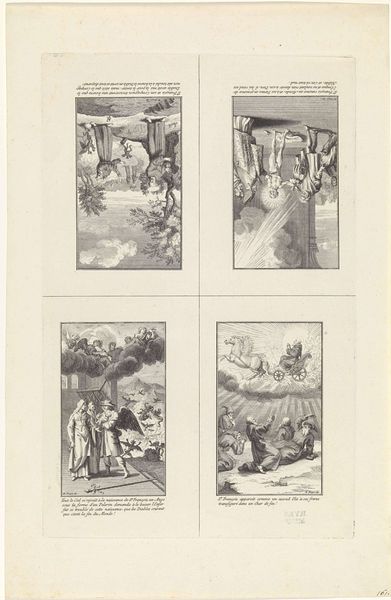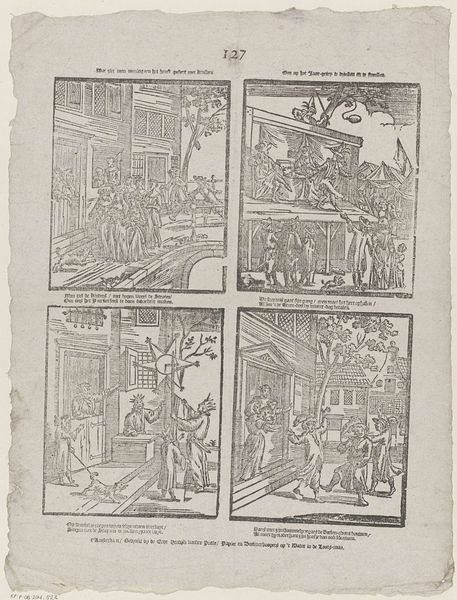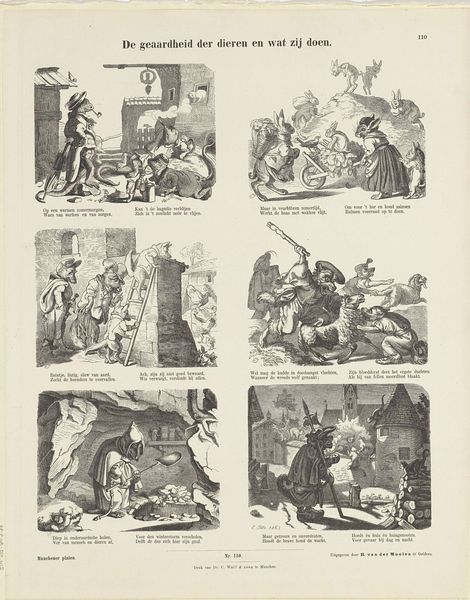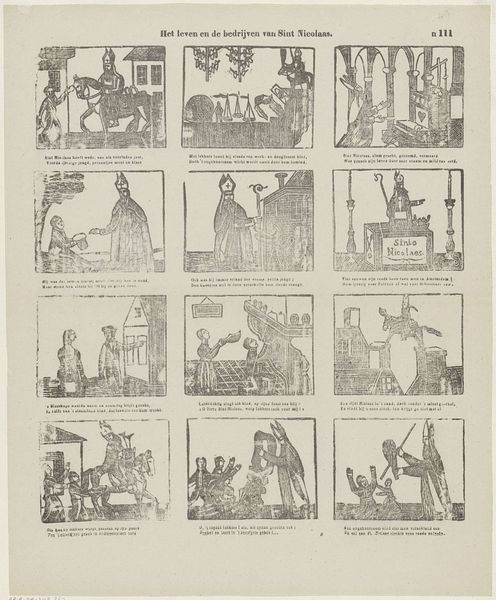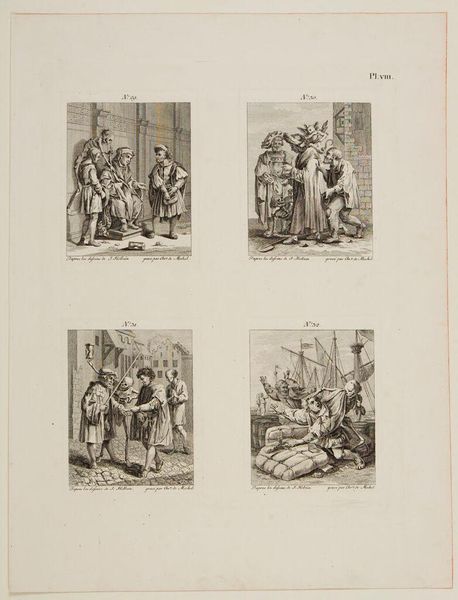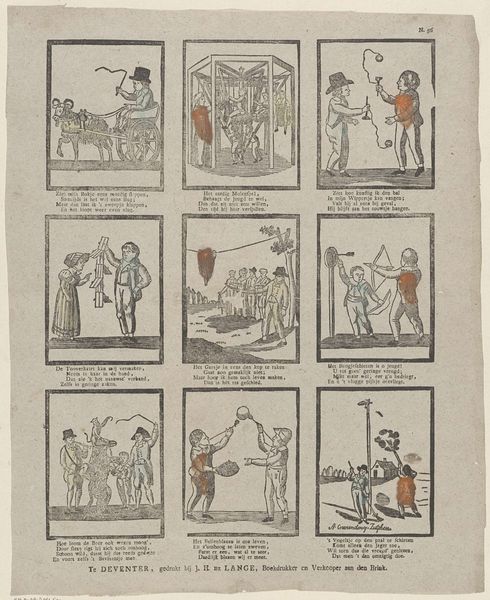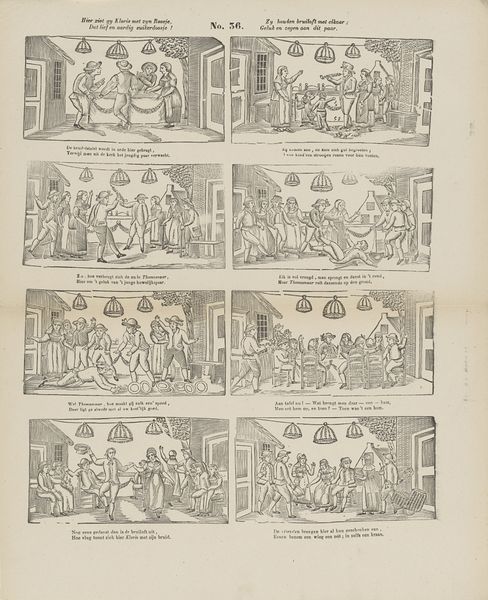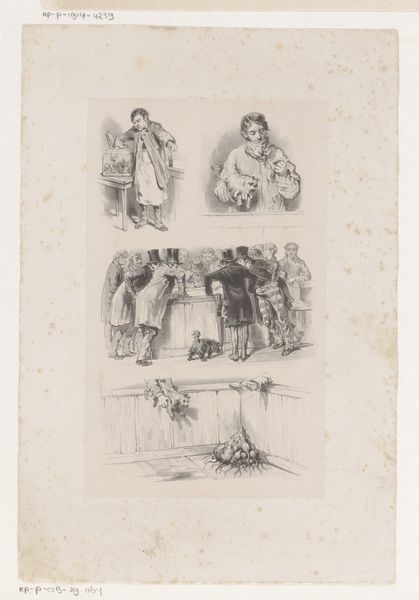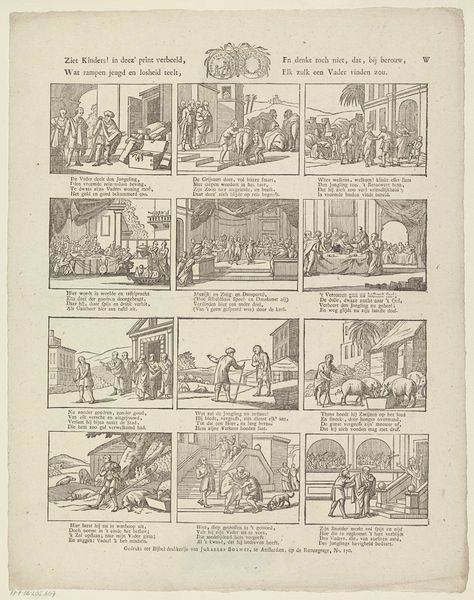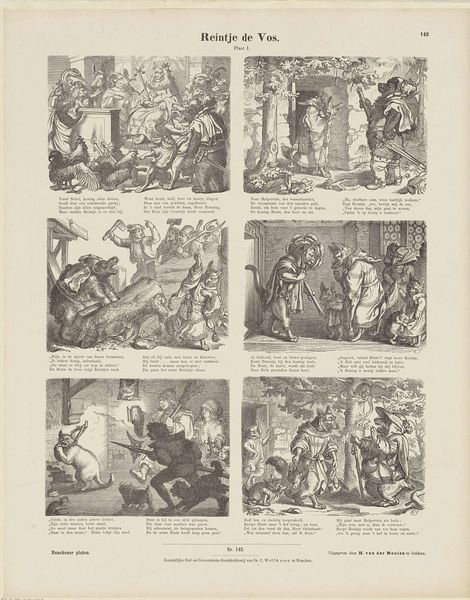
Hertuginden, Skriftefaderen, Bissekræmmeren og Kjøbmanden 1844
0:00
0:00
drawing, print, ink, woodcut
#
drawing
#
narrative-art
# print
#
figuration
#
ink
#
woodcut
#
genre-painting
#
history-painting
Dimensions: 250 mm (height) x 175 mm (width) (bladmaal)
Curator: Immediately, I'm struck by the starkness. A quartet of confrontations with death, depicted in black and white. Each panel, so dense with detail, pulls you in. Editor: Yes, there's an immediate draw to the memento mori aspect of this artwork by Axel Theodor Kittendorff. The title is quite a mouthful: "Hertuginden, Skriftefaderen, Bissekræmmeren og Kjøbmanden," which translates to "The Duchess, the Confessor, the Peddler, and the Merchant." It's dated 1844, and executed with ink, as a woodcut or print. These compact compositions convey a much grander, historical scope, don't they? Curator: Absolutely. Visually, the skeletal figure unites these scenes across societal strata. The Duchess in her chamber, attended by the grim reaper; the priest seemingly led by death. I detect that this recurring visual underscores something universal... Editor: Exactly. Consider the moment. 1844. Europe still grappled with outbreaks of disease, a collective memory shaped by devastating plagues. Death, present in every panel, operates less as a terror and more as an equalizer, a motif deeply embedded within European iconography since the Middle Ages. Think about how visual and societal anxieties intertwined in these works of public consumption. Curator: And see how Kittendorff employs certain visual shorthand for social critique. The merchant, perhaps consumed by worldly possessions as death hovers, his ship sailing to doom? There's almost a visual pun. The objects, garments and stances give context to their spiritual downfalls. Editor: It speaks volumes about social structures but I believe its success resides in its intimate scale. As a print, likely reproduced, this "Dance of Death" becomes accessible to a wide audience. How intriguing to make art both a personal and communal artifact reflecting anxiety, mortality, and societal dynamics. Curator: In the end, that universality transcends time, even now resonating about inescapable fate. It also reflects on cultural preoccupations, with a light directed at anxieties towards moral choices. Editor: Ultimately it urges a closer look not just at the art, but the viewer as well, reminding us of our own place in the grand narrative.
Comments
No comments
Be the first to comment and join the conversation on the ultimate creative platform.
